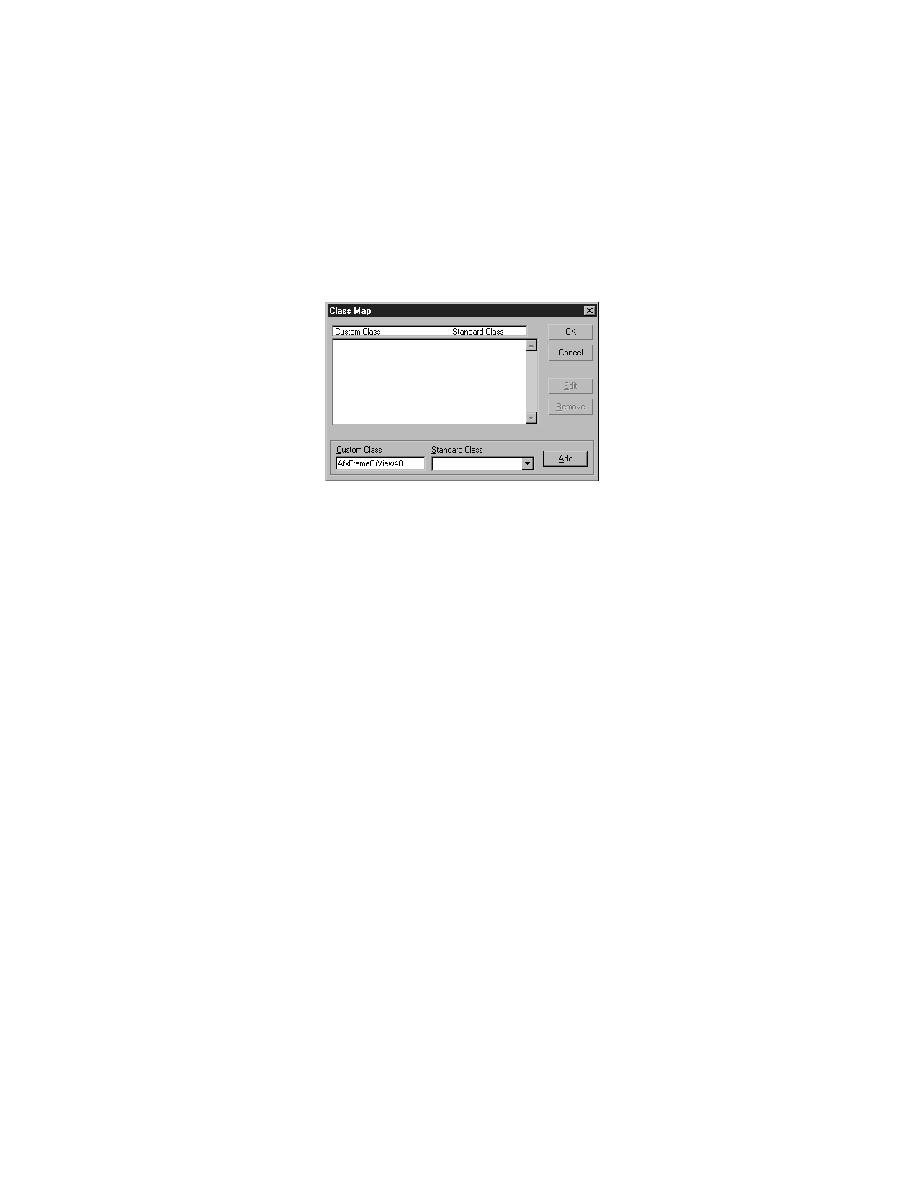
Commands - SilkTest assigns the class CustomWin
object can be mapped to a standard SilkTest class, you should create the
mapping before you paste (insert) the declarations into an include file. Click
the Class Map... pushbutton to display the Class Map dialog, shown below, to
change the class of a custom object.
independent name for referring to an object. The identifier is the name you
use to refer to an object in your testcase. It is arbitrary--you can use any
unique identifier you want for an object.
removing any embedded spaces or accelerators. You can edit the identifier,
for example, to make it more descriptive. The change will be reflected in the
list box.
default SilkTest constructs the tag from the object's caption and Window ID,
but it can also be based on the object's prior text, index, and location, as
shown in the Tag Information group box. To include other components in the
object's tag, check the appropriate check boxes in the Tag Information group
box. The tag is updated in the Window Detail group box.
pushbutton.
SilkTest can use to construct the tag for the object.
declarations you've recorded. It shows the class, identifier, and tag of the
recorded object and its child (subordinate) objects in the GUI hierarchy. The